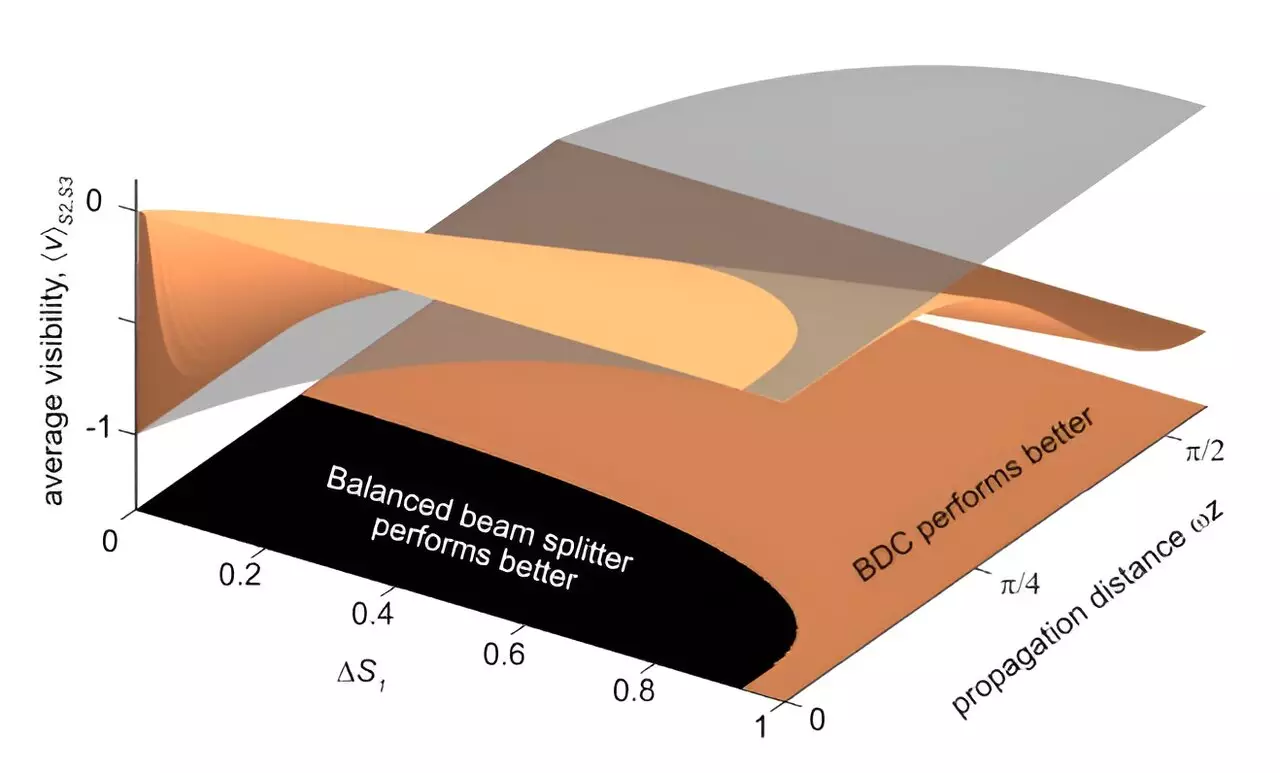The collaboration between Professor Szameit’s research group at the University of Rostock and researchers from the Albert-Ludwigs-Universität Freiburg has led to a groundbreaking discovery in the field of optical chips. By incorporating the concept of topologically protected wave propagation, they were able to stabilize the interference of two photons in optical circuits. This research, which has been published in Science, sheds light on the synthesis of seemingly unrelated concepts to drive scientific innovation.
The behavior of photon pairs in a beam splitter was initially observed in 1987 by physicists Hong, Ou, and Mandel. This experiment, which was independent of topology at the time, highlighted the unique ability of photons to form interference patterns when interacting with each other. The discovery of photon interference, along with entanglement, has paved the way for new optical quantum technologies, such as quantum computers. By combining topologically robust propagation of light with photon interference, researchers have achieved a significant milestone in the pursuit of quantum technologies.
The observed behavior of photon pairs in the presence of waveguide structure can be attributed to the quantum nature of light. Pairs of photons that interact with each other perceive the waveguide structure as twisted, causing them to link up and form interference patterns. This unique phenomenon highlights the topological difference experienced by photons when passing through the waveguide system. The ability to deform the waveguide system without impacting quantum interference opens up new possibilities for constructing topological systems for light.
As Dr. Matthias Heinrich, the senior scientist in Professor Szameit’s research group, emphasizes, the exploration of waveguide systems provides a rich pool of possibilities for developing topological systems for light. The symbiosis between topological protection and quantum light technology marks only the beginning of a new era in optical technologies. The connection between topology and quantum light has the potential to revolutionize the field of quantum computing and other advanced technologies.
The intersection of topology and quantum light has opened up a realm of possibilities for researchers in the field of optical technologies. The ability to harness the global characteristics of waveguide systems while ensuring topological protection of optical elements represents a significant advancement in the field. The collaboration between research groups from different universities highlights the importance of interdisciplinary work in pushing the boundaries of scientific knowledge. As we continue to explore the connection between seemingly unrelated concepts, we are likely to uncover even more revolutionary insights into the behavior of light and quantum systems. This successful collaboration serves as a testament to the power of teamwork in driving scientific innovation forward.


Leave a Reply